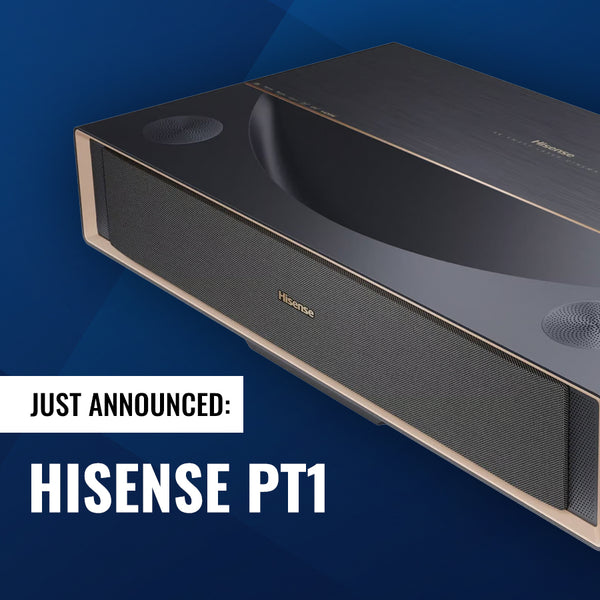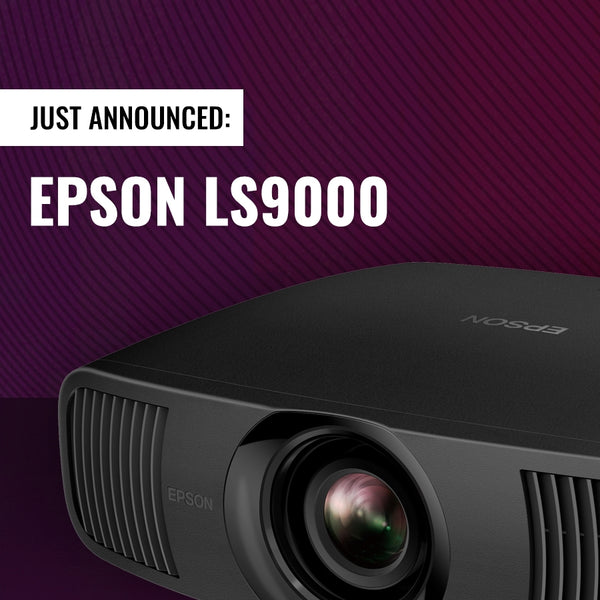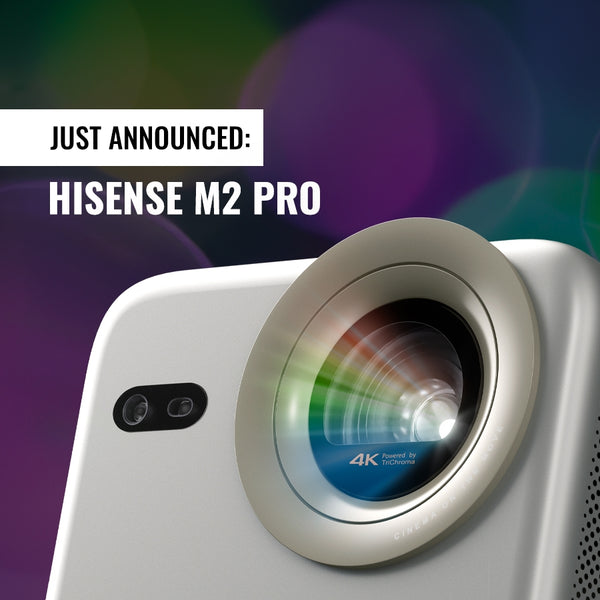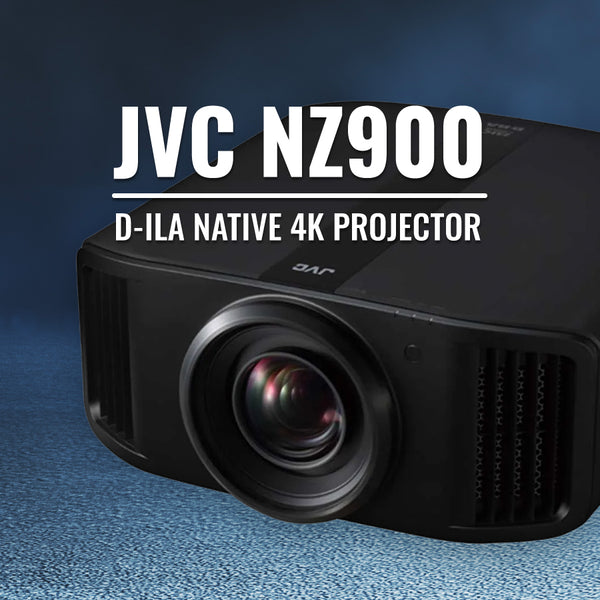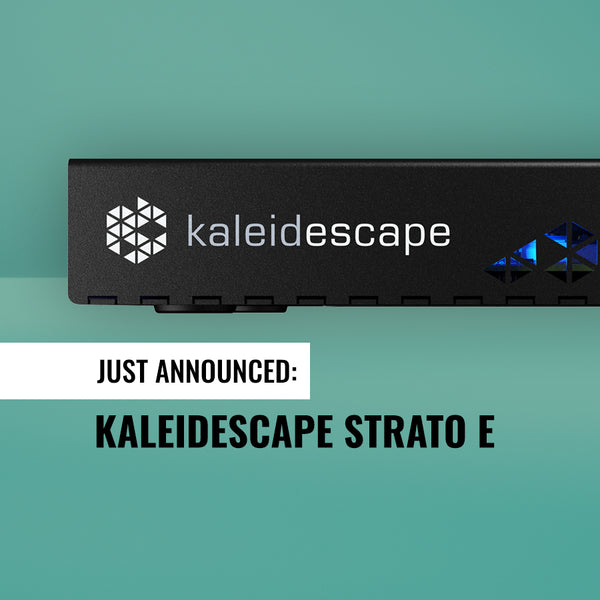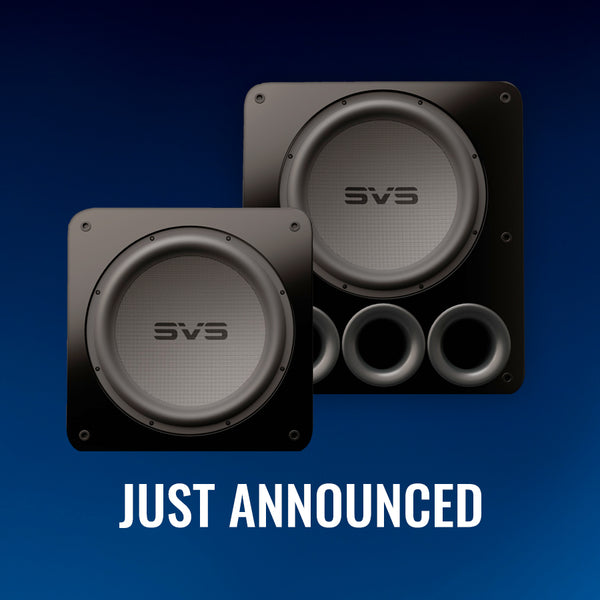Samsung LSP9T vs. LG HU85LA Ultra Short Throw Comparison Shootout
What's up everybody? It's Brian with Next Projection and ProjectorScreen.com here today with the first video in our 4k ultra short throw projector shootout series, we're going to be taking different UST projectors and pitting them head to head against each other.
This shootout video is going to pit the Samsung LSP9T up against the HU85LA from LG.
We'll be playing the same delicious looking content through both projectors with each unit set to the most comparable picture setting.
All of this is going to take place here in our well-lit showroom up against this 100 inch diagonal https://www.projectorscreen.com/Grandview?Attribs=6241& UST ambient light rejecting projector screen.
Please keep in mind that what you're seeing in this video is a number of steps away from the in-person experience. So take into account that:
1) We are projection experts, not videographers
2) We're projecting a 4k HDR source.
3) We're filming the reflection off of the screen with a 4k camera that is not filming in HDR
4) We're compressing the video and uploading it to YouTube
5) You may or may not be watching this on a 4k display.
If you want to get further into the visual nuances of each projector, check out the links below.
Both of these UST projectors are triple laser, high lumen output and are considered among the best in the class.
This is going to be a great shootout that I'm excited to see, and we’ve been getting a lot of requests for.
We know which one we like best, but we want to hear what you think. So please leave your thoughts in the comment section below.
Also make sure to like our video and subscribe to our channel for notifications of all of our new upcoming videos. And if you have any questions, don't hesitate to reach out to us at ProjectorScreen.com.
So with no further ado... in one corner weighing in at 2,800 lumens, we have the Samsung LSP9T and in the other corner, weighing in at 2,700 lumens, we have the LG HU85LA.
Are you ready for this shootout to begin? I know I am. Let's do it!!!!
Now in this video we're going to be comparing the Samsung LSP9T and the LG HU85LA in their standard picture mode, which is the picture mode you’ll most likely be watching.
Right off the bat, we can see that the LG’s image does appear to look brighter despite being a hundred lumens less than the Samsung at its maximum brightness.
In the scene with the sautéing hunks of meat, in the standard picture modes, it seems that the LG retained a higher level of brightness than the Samsung. We can see less white clipping and more shadow detail in the Samsung as a result of the seemingly brighter image on the LG. This has a lot to do with the tone mapping of the machine. It looks to me from this image that the Samsung is mapping better than the LG is. However, the LG, as I mentioned, is brighter in this picture mode. It's generally better to have a higher ceiling in terms of the brightness, because you could always bring it down as opposed to the other way around. The color reproduction on the Samsung looks closer to what you would see in real life, giving it the edge over the LG in this particular.
The liquid motion looks really good on both of these units. However, I would say that overall, the Samsung LSP9T has some of the best motion handling out of all of the current USTs.
The lobster on the Samsung looks way more saturated giving that initial wow factor. But if you look at the depth of the image, I would have to say it's better on the LG. The depth makes this image look more three-dimensional whereas the similarity of the red tones of the lobster on the Samsung make the lobster look a bit flatter. The lobster color looks a bit more accurate on the LG with a slightly more orange tin to the shell. The skin tones look absolutely fantastic on the LG, but thanks to the true green laser on the Samsung, they look even better on that.
So now we're going to be talking about the yellow and the green in the image with the lobster and the asparagus on a plate. To me they look tremendously similar, which is really surprising because the Samsung is a true RGB laser projector, whereas the LG is an RBB laser. It's almost like an about face from some of the scenes we saw earlier because in this particular scene, we're seeing a blue push on the Samsung.
Both of these projectors are using the larger 0.66 inch DLP chip and have outstanding picture. They have high levels of detail and very celluloid looking images on both of the projectors because of the size of the pixel being very small. The images are very smooth.
In the scene with the lobster claw, I would say that the LG’s image appears to have more clarity. It just looks to be more clear because the flowers are popping more, but they both have really stellar images that are both really sharp. You can really see the better greens that the Samsung produces with it's more vibrant color.
With the shot of the caviar on ice, take some note of the caviar on the LG. We see a lot more of these white dots, which some people may interpret as showing higher levels of detail. But what we're actually seeing is a little bit of white clipping similar to the white flecks that we saw in the frying pan seen earlier. The LG is also shifting the color a little bit cooler than what we're seeing on the Samsung, which does appear to be more natural in this particular scene. I would have to say that the ice cubes on the LG appear to be more sharply defined and more frozen for lack of a better term than what we're seeing on the Samsung. However, on the Samsung Premiere LSP9T, I’m seeing a higher level of detail in the place mat underneath the plate
In the shot of the desert with chocolate being poured on it we have a lot of interesting contrast. If you look at the bottom of this cake, you're going to see that it's kind of washed out on the LG. On the Samsung it is retaining all of that shadow detail. The LG is a much larger unit with a wider chassis and the extra surface area is introducing more reflection back into the image. It's one of the reasons I will never understand why all of these UST manufacturers are making these in a white chassis instead of black, because the black is not going to reflect nearly as much light, but hey, I'm not the designer in charge in this particular scene.
Let's take a look at the raspberry on top of the orange, on the Samsung, we're able to see more detail of the berry beneath the glaze than we can on the LG. However, the glass plate detail on the LG appears to be sharper than what we're able to see here on the Samsung. When we talk about the color of this, there's some extra vibrancy to the orange on the LG than what we're seeing less of on the Samsung ultra short throw.
Samsung Premiere LSP9T Vs. LG HU85LA CineBeam
So the million dollar question is which one of these two did I think was better. And that is a tough call.
When it comes to the brightness, the Samsung is rated at 2,800 lumens versus the LG at 2,700 lumens. However, as you can see in our videos when running and standard picture mode, it really did appear that the LG was brighter.
Both of these units have a 0.19:1 throw ratio, which means they can both be very close to the screen, closer to the screen than the competing USD alternatives. Both projectors also use the larger 0.66 DLP chip set, which gives enhanced detail and contrast over the smaller 0.44 inch chip.
The Samsung uses an independent red, green, and blue laser to compose their colors. Whereas the LG uses a red, blue and a secondary blue laser that runs through a yellow filter in order to make green. The true RGB laser is the cream of the crop when it comes to projector technology and is absolutely an advantage that the Samsung has over the LG and every other UST out there.
The Samsung can achieve 106% of the BT 2020 color gamut, where the LG can only achieve 97%. What does that mean for you? Well, not that much right now, based off of the content that's currently available. However, with the Samsung and its wider color gamut, you are going to be more future-proofed as that type of content becomes more available.
When it comes to the contrast, we’re disregarding what the manufacturer is stating, and we took our own measurements. We measured the sequential contrast of both units. What that means is we measured an all white screen from each projector and an all black screen for each projector. With our own measurements we measured 2,267:1 sequential contrast with the Samsung and 2,338:1 with the LG giving the LG advantage when it comes to contrast ratio.
Both projectors have a built-in soundbar. The Samsung has 10 Watts x4 speakers, as well as a simulated Atmos module. The LG has two, 5 watt stereo speakers. The Samsung absolutely has the advantage when it comes to the integrated audio. However, I don't know how many people that are investing $6,000 on a projector are really going to rely on the integrated soundbar for their complete soundstage.
The pricing of these two units used to be much closer with the Samsung at $6,500 and the LG at $6,000. However, very recently, LG had dropped the price on this model down to $4,999. That price difference makes a very compelling case for the LG projector versus the Samsung, especially when budget is a primary concern.
So which one of these two is better. I'm not inclined to pick a favorite. What I can say is that for $1,500 less, the LG may give you a better value for your dollar. However, the Samsung with its more advanced HDR handling and supporting more formats is absolutely the more future-proof projector. Long story short, both of these are absolute winners and you won't regret your choice whichever one you select.
You can read our Samsung LSP9T review to get more of our thoughts.



